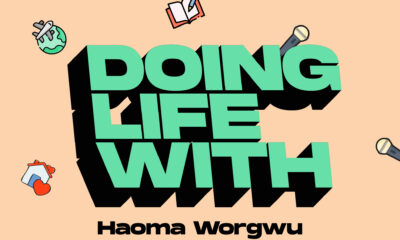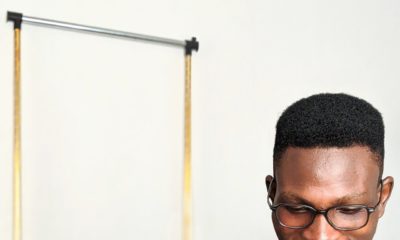Features
Praise Abu: An Easy Guide to Writing a Compelling LinkedIn About

A LinkedIn summary is also known as the “about” on your LinkedIn profile. It used to be called “summary” but was replaced with “about” when the social professional platform advances. As explained by LinkedIn, it is an open-ended space, written under 2000 words, where you give an overview of your professional life. As a young professional, having a LinkedIn profile is an essential tool for advancing your career. Your profile becomes even more appealing if you have a compelling summary because it would help you stand out from the crowd.
LinkedIn summary might sound strange if you are not familiar with LinkedIn or you are still trying to navigate the platform. Your summary can be found on your LinkedIn profile and it appears as “about”. It’s just right after your name, before the experience section. You LinkedIn about is important because it draws special and specific attention to your page.
A lot of people struggle to write their LinkedIn about which is understandable because like them, I once struggled writing one. I could have titled this article LinkedIn summary but I used “an easy guide to writing a compelling LinkedIn about” instead because I wanted you to see and understand it as a summary rather than just an about. This is because a summary is a brief synopsis of the main points of something. Hence, your summary is a synopsis of what you are.
The aim of this article is to simplify the process and not create confusion of some sort, so the process will be broken down for you to the simplest form possible. Henceforth, I am going to be using “a summary” instead of “about” to avoid confusion. They are the same as I have stated earlier.
The first thing is for you to think of yourself as a brand. Basically, LinkedIn is a platform for professionals who, even if some don’t, have a clarity of what they intend to market, So your summary will help you communicate your value proposition as a brand. This is why it is important to take this exercise seriously.
The main idea behind summary is to articulate your words to make a good impression when viewers visit your LinkedIn profile. You want them to be enthralled so that they click on the connect button/follow button. I am an advocate of selling yourself and doing it well. As it is good to sell your yourself, try not to oversell yourself by selling lies about what you don’t possess in skills. At the same time, don’t undersell yourself. There should be that balance while drafting your summary.
Now that we have touched on that, let’s get right into the basics. The following are the components for writing a great LinkedIn summary.
Define your brand
The first component is to first see yourself as a brand. To guide you in doing this, you can answer these questions: Who are you? What is your personal brand? What does your brand promise? Answering these questions would help you in telling a compelling story, one that communicates your personal brand. You can go about it in different ways but my approach to this is storytelling and I believe it works. Know/find your story, align it with your brand message and communicate it to your target audience. You see what I did there, now I will share my about with you. Remember, it doesn’t have to be perfect but I love this and I know it tells my story.
Example 1:
“Why you act the way you do” by Tim LaHaye explains how temperament affects a person’s work, emotions, and more. As a young girl sitting in her psychology class, this book ignited my interest in HR. This was how my HR love story began and for a very long time, it has helped me to appreciate the “human factor” in human resources.
You would notice that I was able to communicate my love for HR and I wanted my target audience to see that it is something I am truly passionate about. I did this by showing the moment I discovered my love for HR. I simply wanted to tell my own story and I believe I did just that. I have had this for a while now and I intend to update it soon but one thing is certain, it still tells my story although a lot has happened since I wrote that. I will share two more examples that I wrote when I worked on some LinkedIn Profiles.
Example 2:
“Don’t wait for things to happen. Make them happen.” This quote by Roy Bennett aligns with my thought process and personal values. I am a self-starter who enjoys finding creative solutions to problems and making things work.
Example 3:
As a child, I was always curious about how things worked. I wanted to understand the processes that led to creating the product and I still remember tearing apart gadgets just to see how they work. This curiosity led to my love for software and my yearning to acquire a formal education in that field. Although, I never got a bachelor’s degree from a Nigerian University, and even after several failed attempts at gaining admission into the university I didn’t deter. I still kept on going. Yes! I am that person. This passion coupled with my discipline, a never-ending thirst for knowledge, and my interests have set me on my current path and still remain with me.
The idea is to find your story, tell it, and align it with your brand. Always remember that you are a brand.
Skills and Experience
This is the next component after the first component. It should be the next paragraph. I would have separated skills from experience but I chose not to. This is because I understand that I have a mixed audience; while some might be experienced, some people are just starting in their careers and don’t have any experience. However, I want you to keep in mind that your NYSC or any other internship experience you may have also counts. For skills, you can include creativity, adaptability, content creation, digital marketing, and others. For your experience, you can paraphrase any of these: “I have over a year of experience or I have worked as a content creator for the past 4 years”, “I pride myself on my professionalism, and my tech-savvy and adaptable skills”. You have to communicate the main points and be concise. These are just examples. The idea is to find your story and tell it.
Competencies/Areas of Expertise
Ask yourself what are those things you can do efficiently as a young and experienced professional. In the previous paragraph, you are expected to focus on your soft skills. While here, you list out your technical skills. For example, a software engineer’s technical skills would include JavaScript, Python, and others. An experienced HR Professional would probably have Talent & Performance Management, Recruitment & Selection, and Negotiation & Change Management.
Areas of Interest
This is optional but I think it is relevant, especially for young professionals who are still having a hard time defining their competencies/areas of expertise or even aligning it with their brand. Hence, I suggest you include this in your LinkedIn Summary. Technically, your areas of interest can often translate into your competencies. An example, a young HR Enthusiast or professional can have the following areas of interest ( Talent Management, HR Consulting, Compensation and Reward Management, etc). The focus here is to find those areas that you are interested in, hopefully, you want to become a specialist in that field or become well-versed in those areas and just list them out. Other examples, Copywriting, Photography, Software design, Fashion sketching, SEO marketing, etc.
Call to Action
This is the last paragraph or line your LinkedIn summary. I think this part is not compulsory necessary. You are telling whoever visits your profile what you want them to do. I will share two examples below. Feel free to personalise yours however you deem fit but the idea is that you see the purpose of a call to action on your profile.
Example 1:
I enjoy learning and hearing new insights. If you have a project, I can help with or if you would love to network, please get in touch.
Example 2:
I love meeting new people and learning new insights. Feel free to connect with me for networking opportunities or a chat.
Now, you have a template for writing an easy yet compelling summary. You just have to be intentional while writing your summary. Here’s a recap: You are a brand. When communicating your brand in your summary, be authentic and communicate value. You are basically summarising your entire LinkedIn profile, so include only the main points, and be articulate and concise in your approach. Make it fun too. This is the perfect recipe for telling a compelling story.
I highly recommend the first-person narrative. It is more intimate and makes your story more relatable because I can tell by your tone that you are telling your own story. It makes it much easier to build an emotional connection with your proposed target audience or those that view your profile. Please, resist the urge to write in the third person narrative. An example, “Praise is a Human Resources Professional who loves telling stories.”
Finally, don’t forget to proofread your draft. Check for spelling errors. Don’t forget to punctuate your sentences and use the right punctuation marks. Also, master your paragraphs. You don’t want to muddle up the words in one paragraph. At most, your summary should be in three or four paragraphs. I want you to remember that the beauty of a great summary is all the components in this paragraph. You have an easy template, but to make it work, you must also proofread your draft. And it is okay to go have as many drafts as you want. Your LinkedIn summary/about will always be a work in progress and that’s okay. You just have to keep tweaking and updating it.
***
Featured image: PNW Production for Pexels



















